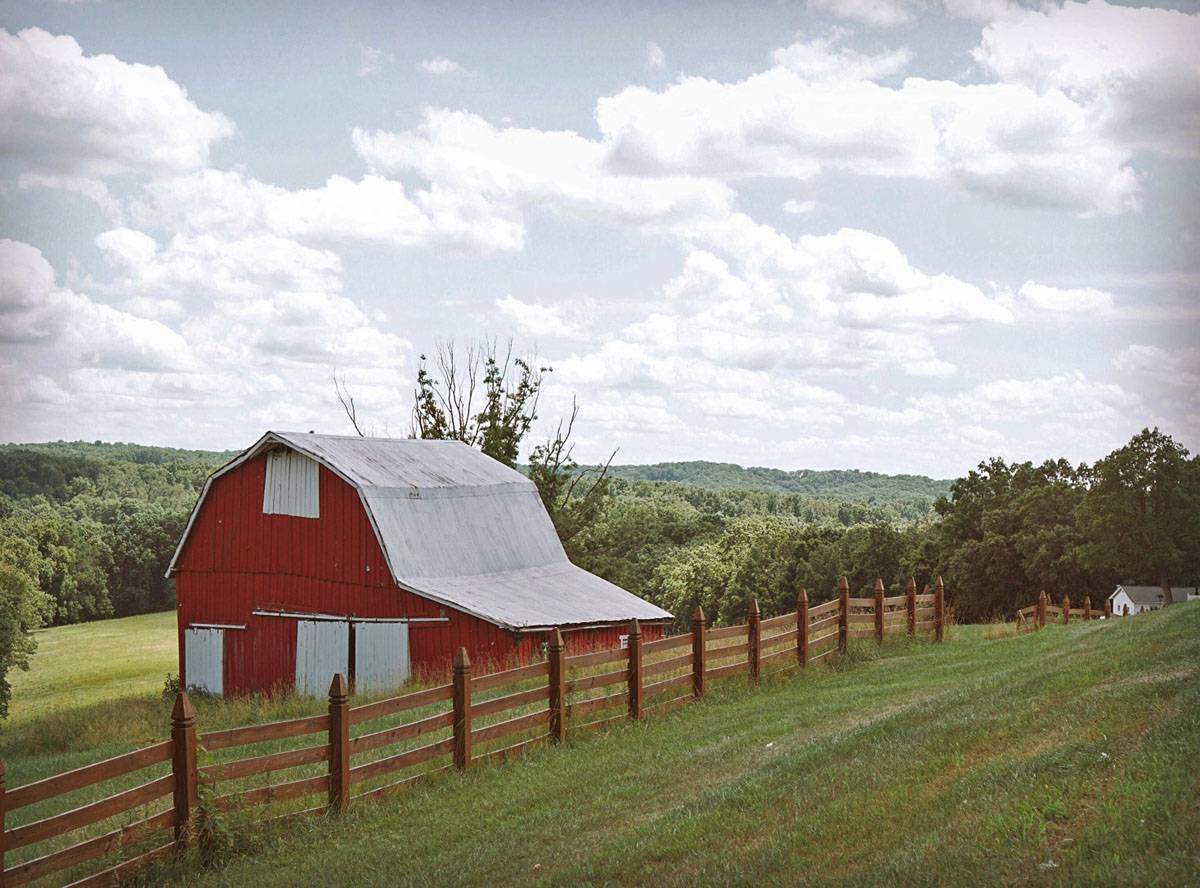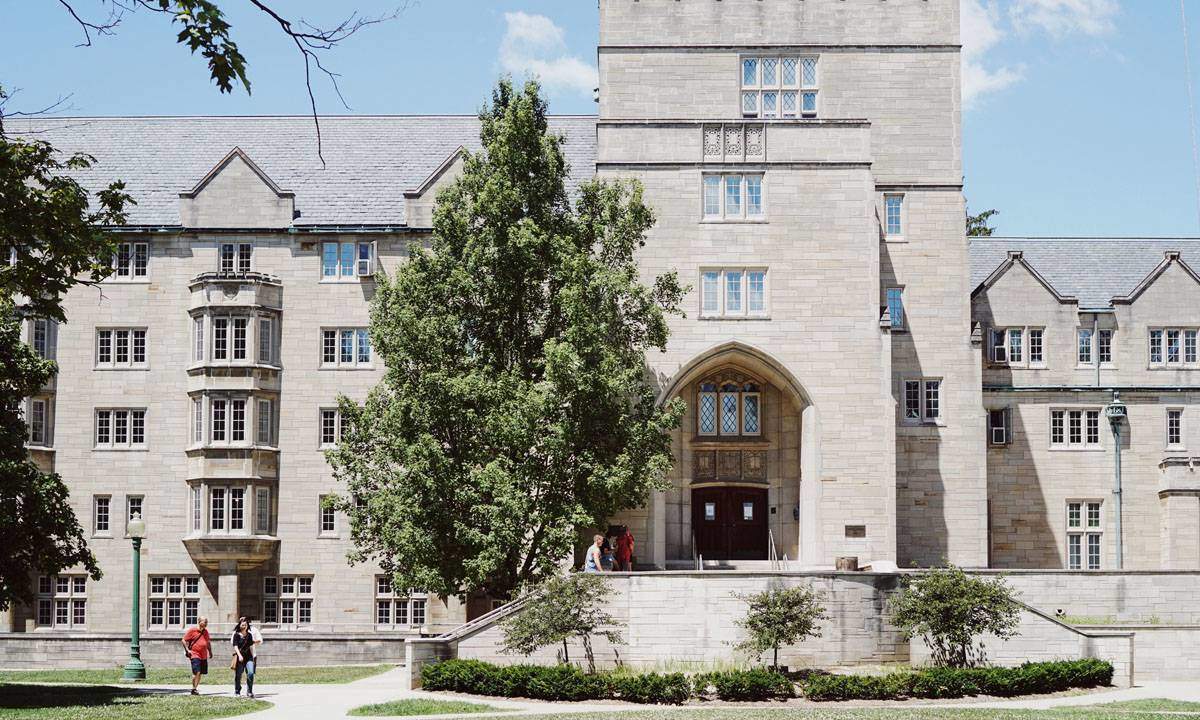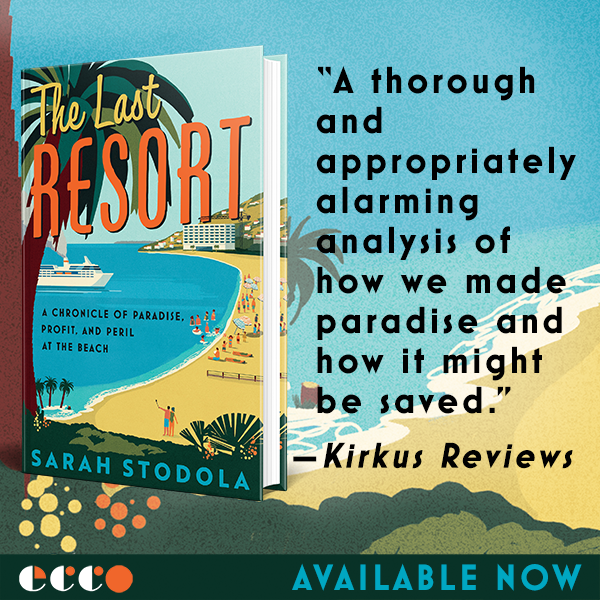In June, for the first time since shortly after my graduation in the spring of 1999, I returned to the campus of Indiana University in Bloomington, where I went to college. It’s a three-hour drive from my parents’ house in Kentucky, and every time I visit them there from New York, which is less often now that they spend winters in Florida, I think maybe I’ll drive up. After 17 years, I got around to it.
The night before my boyfriend and I made the trip, my mom asked me what I wanted to see at IU. Thinking out loud because I hadn’t thought about it up to then, I told her, The places I lived and the bars. It didn’t occur to me to name the Journalism School, where I earned my degree, or the Student Union, where I did most of my studying in pursuit of that degree.
The mere thought of IU brought back the odd flash: of limestone facades, tight black pants on Friday nights, the line to check email in the Student Union, fake IDs, of the hours spent in my little room senior year, alone and awaiting my escape. These are floating flashes of memory, unanchored to any sense of their having happened to me in particular, as opposed to any other student.
As I browsed the available Airbnbs a few nights before we headed up, I found that my sense of location in Bloomington had faded—there’s a half-life to remembering where things are, I guess, and I was down to vapors in my ability to get from point A to point B in the place where I spent four formative years a very long time ago.
I presumed, wrongly, that when we drove into town, it would all come back to me. Instead, I turned right when I should have gone straight and drove straight when I should have turned left and looked for my old house eight blocks too far west. When we found the Airbnb, I couldn’t get over how the town’s nearby main square was just up the street from the main strip of bars catering to students. I couldn’t get over how a bar called the Bluebird was within walking distance of literally everything else—the way I remembered it, you absolutely had to climb in a car to get there.
We stayed in a room above a French restaurant. Was it there when I was in school? As I strained to remember, I realized that in college, I only ate out when my parents came to visit. I’d never been to the French restaurant, but its proprietor told me she’d been running it for decades.
We had arrived in a heatwave that was set to abate overnight. This would dictate our sightseeing decisions. First, we took to Kirkwood Avenue, that main strip just off campus. It is, even to an eye unfamiliar with it, readily identifiable as a college town’s main strip. The Urban Outfitters, where I bought so many things simply out of a lack of any other option, is going strong. The old Von Lee movie theater, where I definitely saw Life Is Beautiful, is still standing, sign and all, although it’s now a noodle restaurant. Across the street, Kilroy’s bar now has outdoor sidewalk seating, which seemed somehow antithetical to its late-night, co-ed crazy identity—If you were not in a sorority or fraternity, you could go Kilroy’s, but I wouldn’t have recommended it, and that kind of thing works better in a contained space.
The tweaks in the streetscape only served to emphasize how thoroughly the place has stayed the same, underscoring the amazing permanence of a place whose residents are by definition transient. Things change less over the years in college towns than in any other type of town.
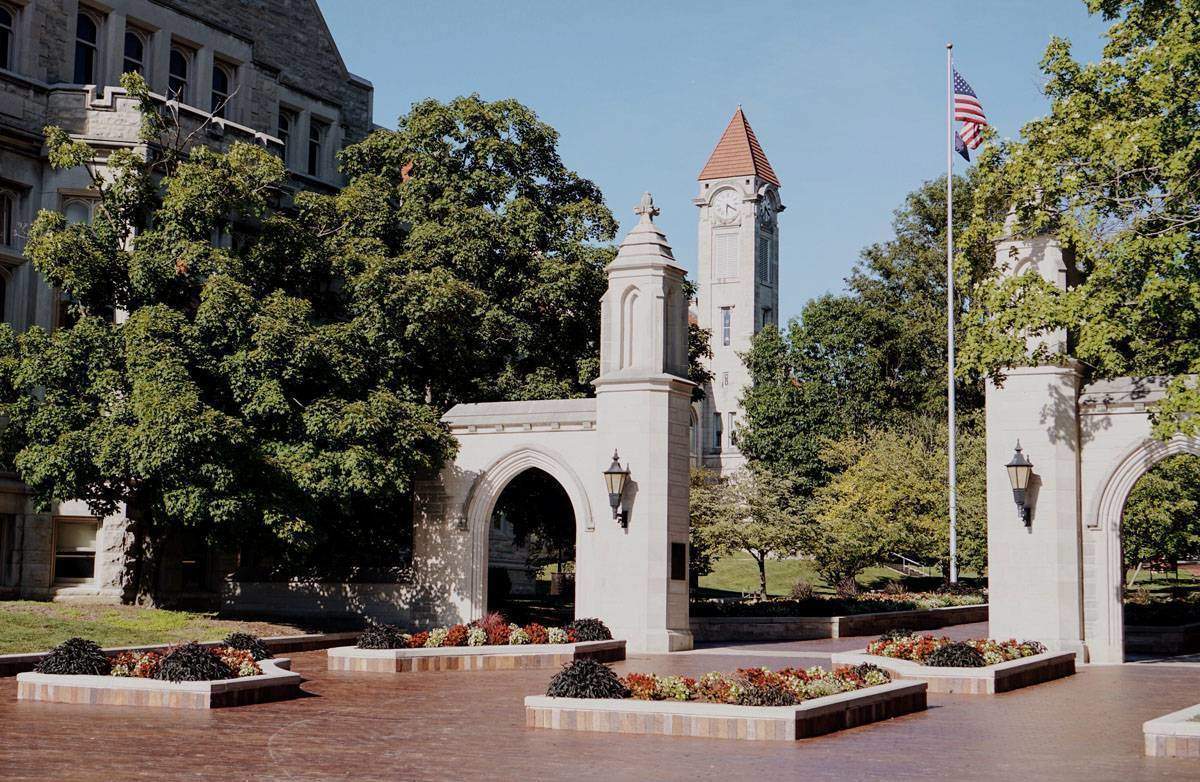


We walked up to the main entrance to campus at the end of Kirkwood, which is flanked by limestone “gates” that give what’s beyond them a noble air. It’s worth pointing out here that I chose to attend IU based almost exclusively on the aesthetics of its campus, its Romanesque buildings and its brick walking paths and the stream that flows perfectly through it. A place that looked like this, I believed, would imbue me with some kind of tradition. It would make me more interesting, smarter, more worldly. It’s a perfect college campus to instill those assumptions in a 17-year-old.
We walked 50 feet in and concluded that no sane person should currently be outdoors when there was air conditioning nearby. We doubled back to Kirkwood and went straight to Nick’s English Hut, famous for being the hardest bar to get into with a fake ID, and for the drinking game played there. In Sink the Bismarck, a table orders a bucket of beer with a small glass floating in it. One person after another must pour beer from their own mug into the small glass, and the person who finally sinks it must drink its contents. It’s one of the better inventions to come out of Indiana University, and one that my dad always appreciated for its reference to World War II.
We didn’t play Sink the Bismarck, which doesn’t work quite as well with only two people. But we did drink beers that were delicious in the way that only beers consumed in very hot weather ever are.
Nick’s became the first stop on an inevitable bar crawl. All the same places were still there, although at least three of them had expanded significantly. At Kilroy’s, we sat at a second bar that had been added since my day, in addition to the outdoor area. I ordered a top shelf vodka soda that cost me $4. The order was not easy, because they didn’t have my first choice, Ketel One, or my second, Tito’s. I think I settled for a Grey Goose, which was fine because even at age 39 I still don’t really care what kind of vodka goes into my drink.



We soon moved on to the Upstairs Pub, where sometime recently an outdoor patio had been added. I ordered another vodka soda and, praise be to small Midwestern towns, it cost me $2—just 25 cents of inflation since 1999. I used to be friendly with the bouncer and he’d always make sure I could get in, even before I turned 21, even when I didn’t have a decent fake ID. Because of this, it was my favorite bar. I don’t remember that guy’s name anymore, nor even what he looked like.
At the Bluebird, which was twice as big as it used to be, we paid a dollar cover charge to gain entry to karaoke night. This being summer, only a smattering of kids were around to get to their turns onstage. We sat a little bit removed from them and sipped our beers and felt strange. I felt reminded of how much older we’d gotten, which despite what people say is easy to forget. I felt myself wanting to be 20 again, and then I felt myself reliving the frustrations of being that age.
On our way out, I spotted a large sign that read “The Roach Motel.” It used to adorn a house right on the edge of campus, where another friend of mine lived. I don’t have a good working theory for how it moved from there to the Bluebird, but I’m glad it survived.
The next morning, having checked off the bars, we set off to see everything else. I did find the Journalism School building, which is now the Media School building, a transition that makes sense in this current landscape of crowdsourcing and Twitter reporting. It’s a cute building from the outside, dwarfed by the Student Union behind it. Inside, it’s dirty white and florescent and depressing. I couldn’t remember where I’d spent any of my time in there. I couldn’t find the Avid lab where I worked my senior year. They maybe don’t bother with Avids anymore.
In the Student Union, I found the spots where I alone of the people I knew liked to study, my favorite being a classic room with herringbone floors and soaring casement windows and a fireplace that’s always on, even during a heatwave. This room made me feel like a gentleman scholar, which was a feeling I liked.



We made our way to the places I lived. Freshman year it was a dorm called Collins, the only beautiful dorm on campus and the most centrally located, for which reasons I chose it (it’s pictured at the top of this essay). Because of some kind of tour, we were able to gain access to the center building, where I ate all my meals freshman year. I both did and did not recognize the place.
Next, the sorority house. In college I joined a sorority and, apologies to those people who are still among my closest friends and whom I met through having joined it, I hated being in a sorority. I hated the way it stunted adulthood by putting 150 young women under a single roof, where they answered to a “house mother” and slept in communal sleeping dorms and were not allowed to have boys over. I hated the way it inflicted an almost total lack of privacy. I hated that when a girl got “pinned,” which meant a guy had given her his fraternity pin to wear—a sort of pre-engagement—we had to sit in a circle and sing a song about sweet wine and pass a candle around until the lucky girl blew it out. I hated that girls wanted to get pinned. I was so miserable in that sorority house that I eventually quit the sorority so I wouldn’t have to live in it anymore. I couldn’t wait to show it to my boyfriend, who went to a small liberal arts college in New England and just had no idea.
It was our good luck that some guys were there doing work on the house, and let us in to look around. Can you believe I lived this way? I asked the one who seemed to be heading up the work and who worked on the house every summer when the young women were away. You couldn’t pay me to make my daughter live this way, he said. Army barracks, he said. You don’t have to tell me, I said.
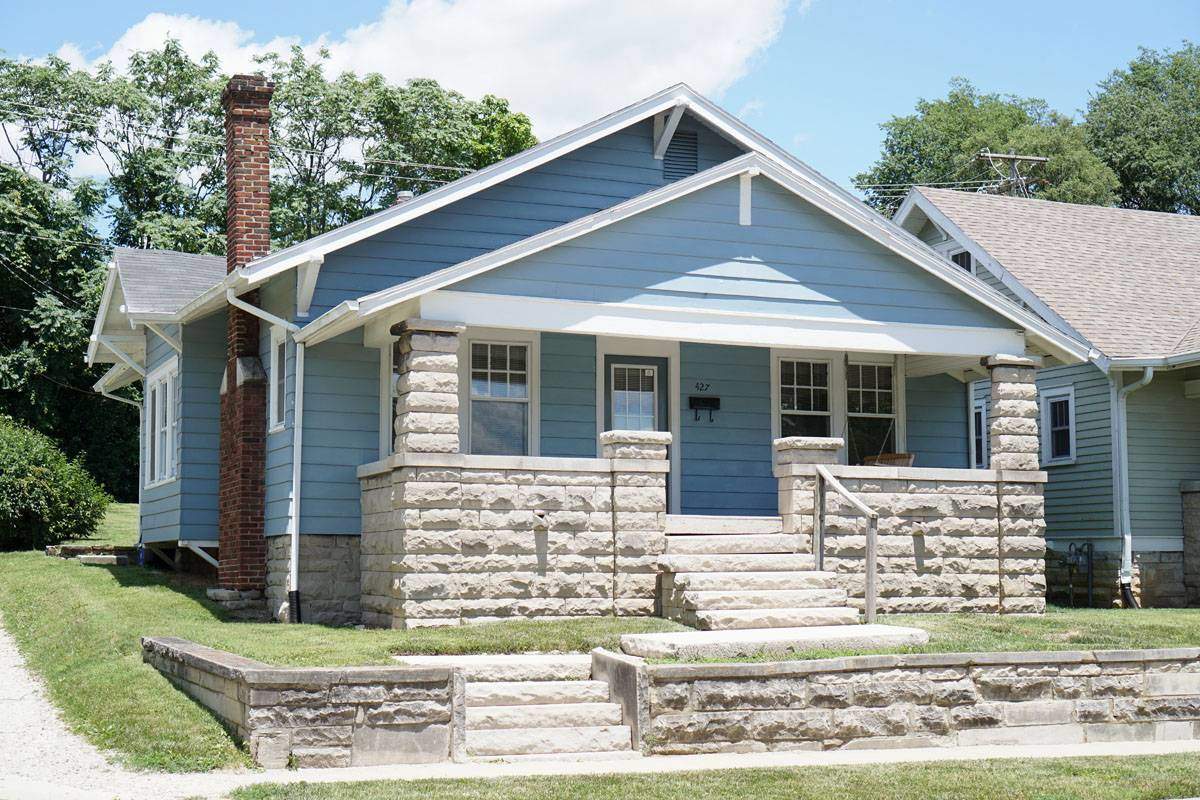


Finally, we drove by the house off campus that I lived in senior year. On my own, finally, at age 22, joined by one other sorority defector and her friend from high school, whom I never spoke to again after our tenure as roommates ended. She got engaged over spring break, which seemed like the weirdest thing in the world to me, who still had yet to take a boy seriously, who wondered in fact why I never fell in love with anybody. The house had been painted blue and the backyard cleaned up. It was still in need of some trees and shrubs. The porch swing, my favorite touch, still hung to the right of the door.
I suppose people who loved college more unequivocally than I did might have a different reaction to visiting their alma maters. For them, I imagine pure nostalgia. I didn’t love college, in the same way I didn’t love anyplace until I moved to New York City when I was 23. Still I felt a muted nostalgia, one mixed with a shade of regret for things that I might have done differently, like spending more time sitting outside in the prettier parts of campus or drinking coffees in the cafes off campus or going to see bands or thinking for myself more aggressively. Even though none of that matters now, and I suspect I ended up in the same place either way. And anyway I wasn’t unhappy in college, even if I felt unsatisfied with it.
Some people, 20 years later, remember college like it was yesterday. Even upon my return, even wandering the campus, even at the scene of the crime, I had to be reminded by others that Showalter Fountain existed and that Kirkwood Avenue ran parallel to East 6th Street and that there was a drink at the Upstairs Pub called the AMF (adios motherfucker). I couldn’t remember where the bathrooms were at Nick’s or if I had a key or a card to gain entry to my dorm building. I still can’t remember how I got from home to class or where I parked my car freshman year.
Early in this essay, I called my college years formative, but were they? I came into college looking for one thing, and spent most of my time there waiting to find that same thing in the wider world after I graduated. On the way back to my parents’ house in Kentucky, we pulled over at a barn I’d always liked. It’s fitting that my favorite photo from that trip is the one I took on the way out of town.
